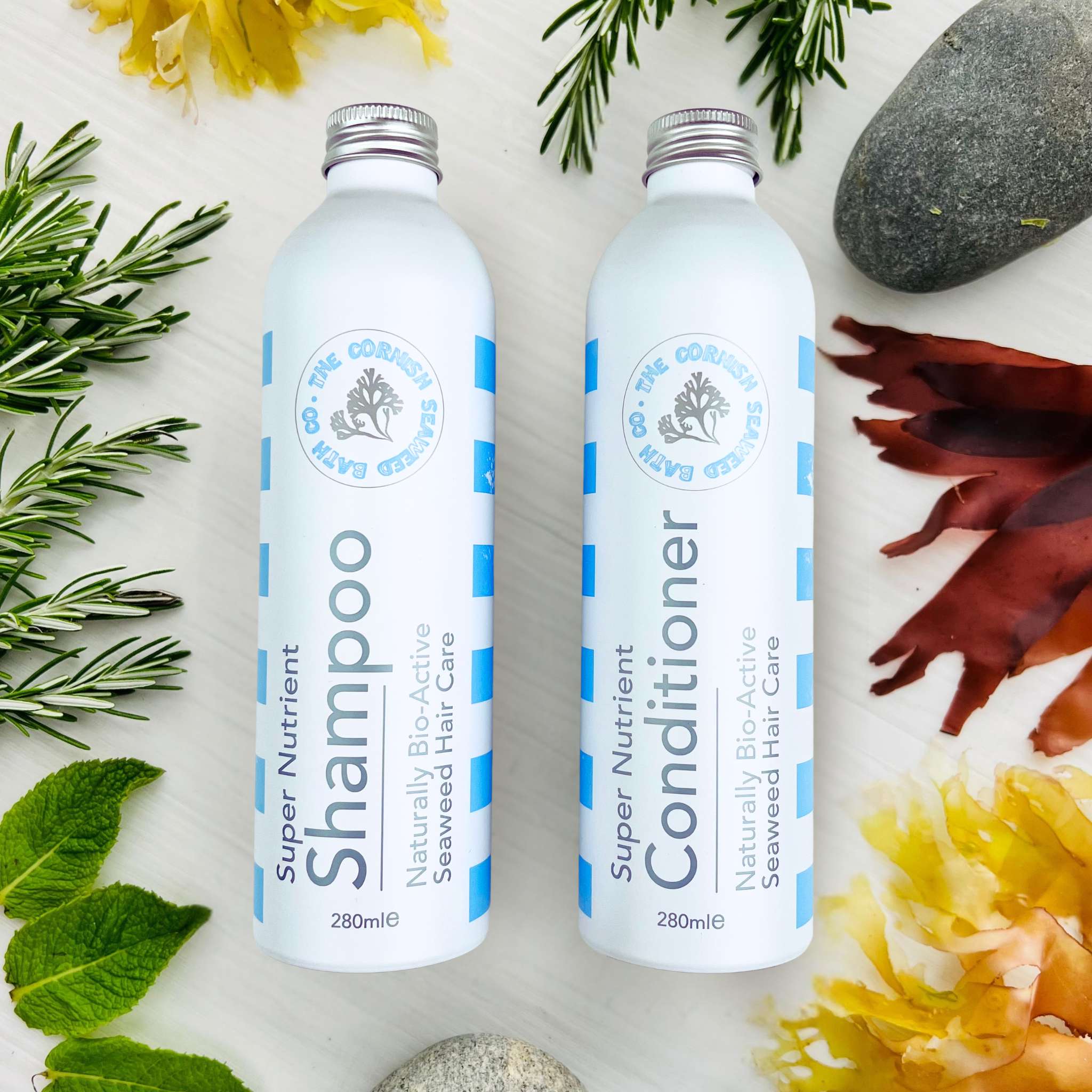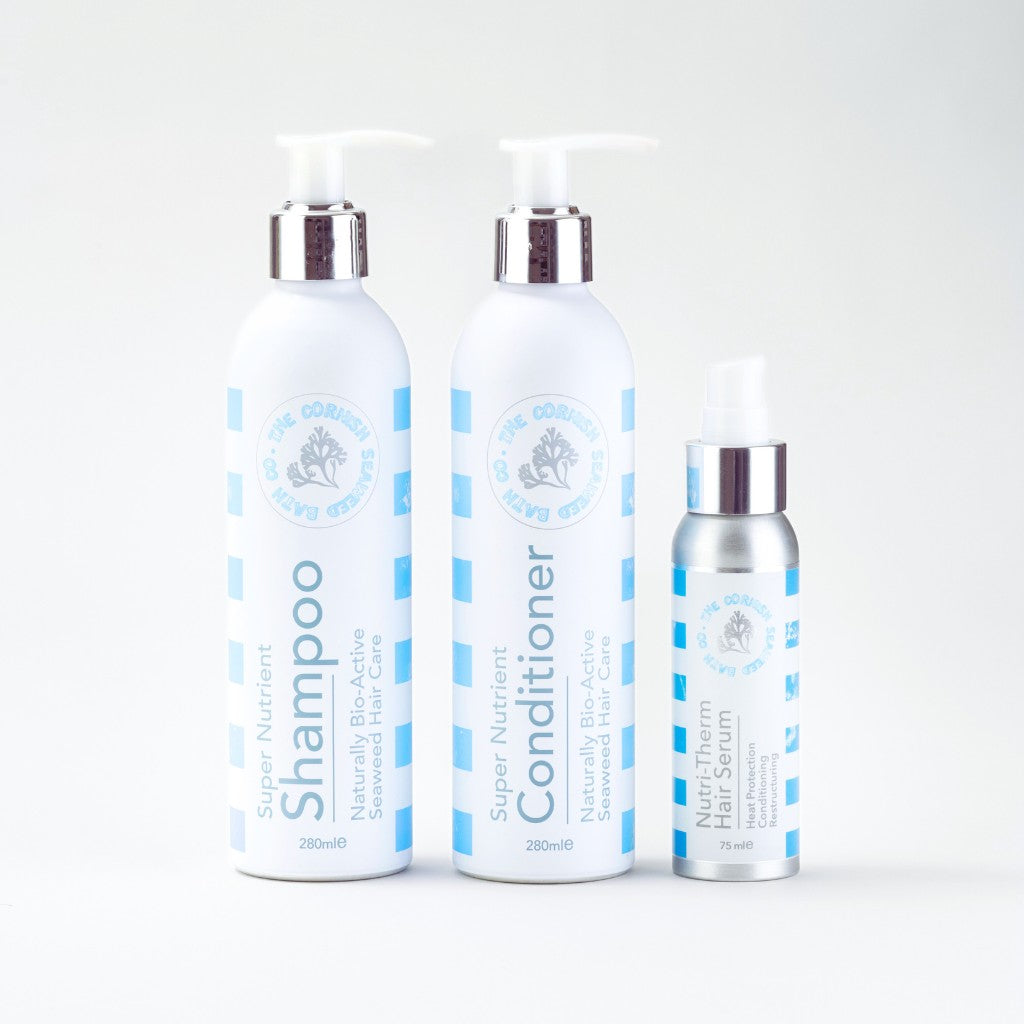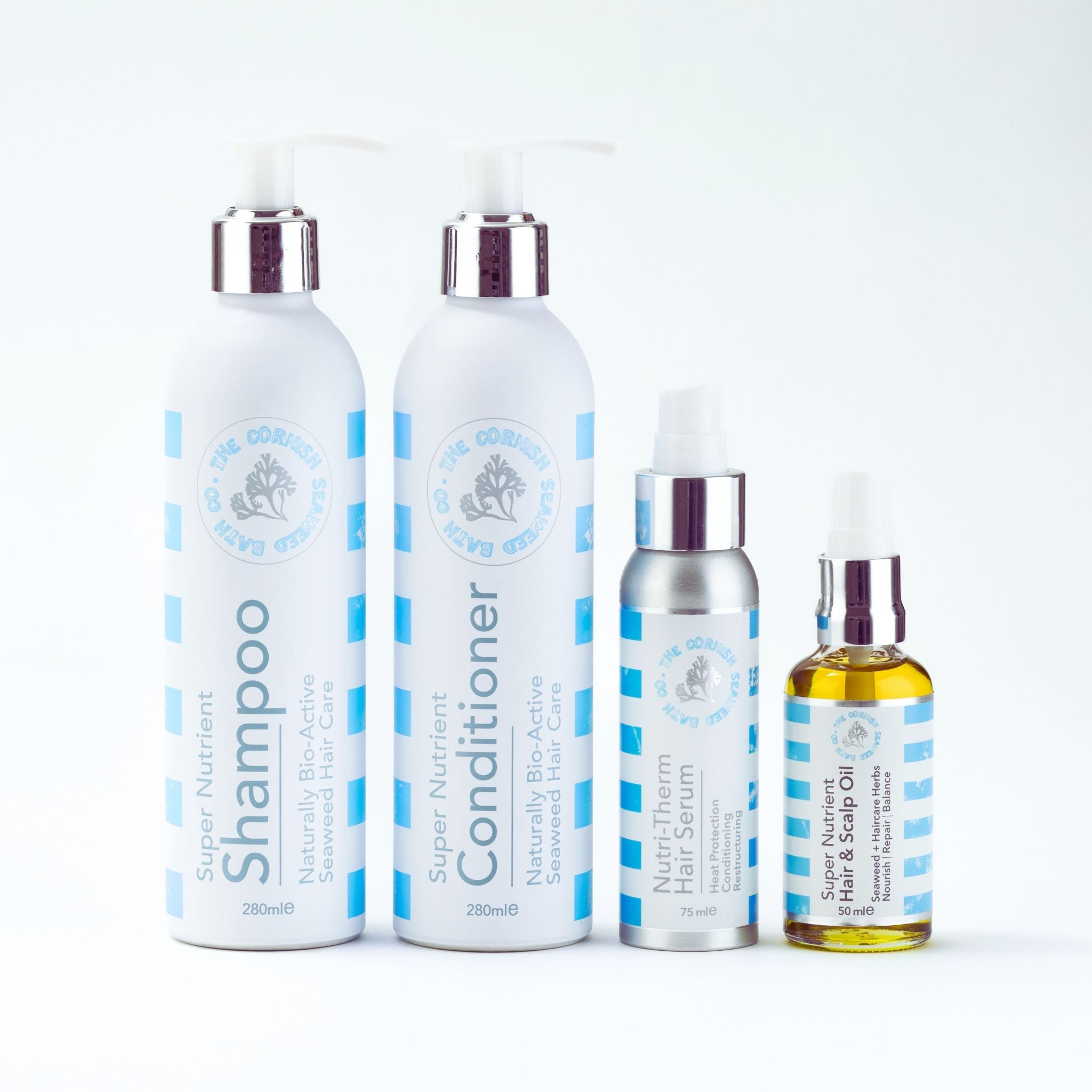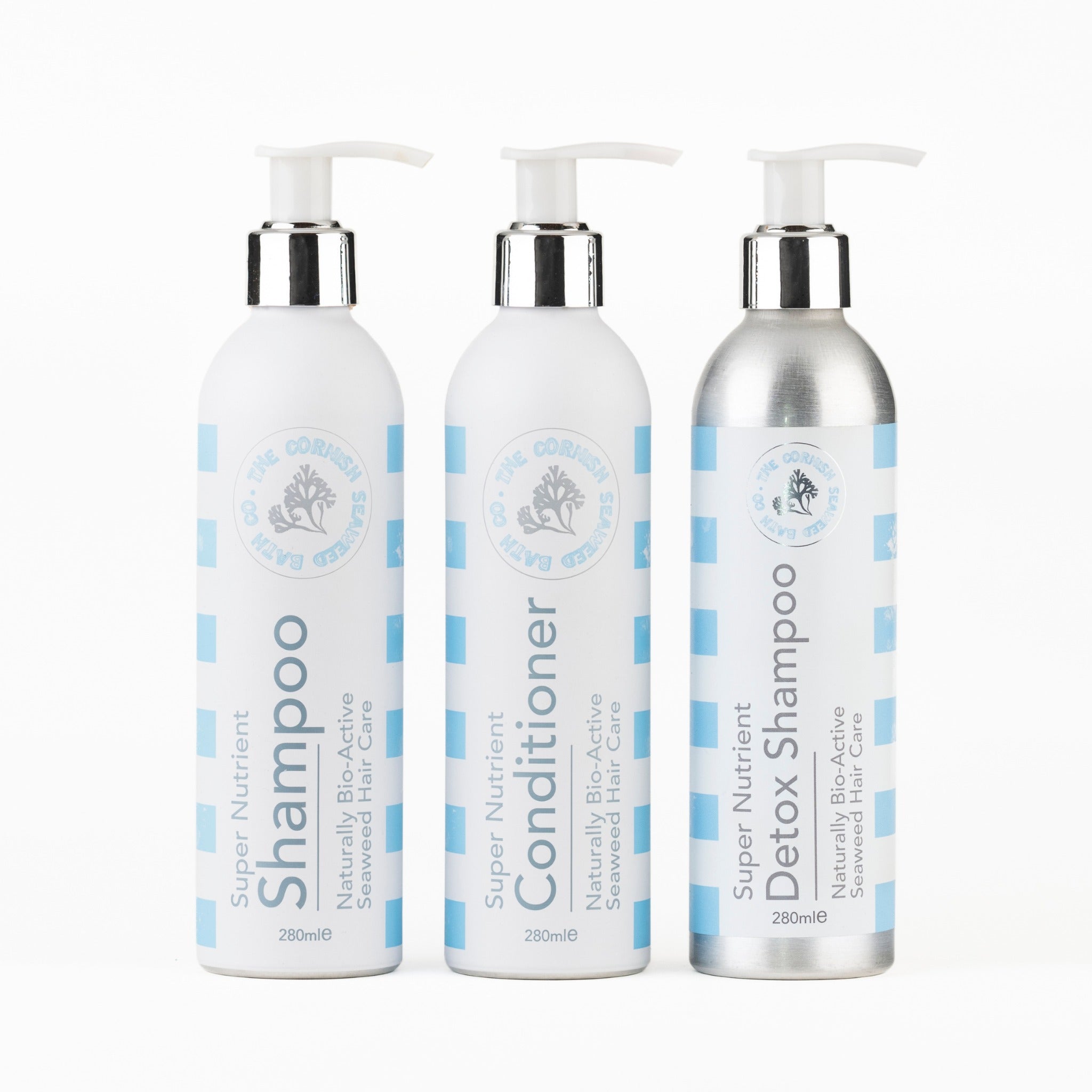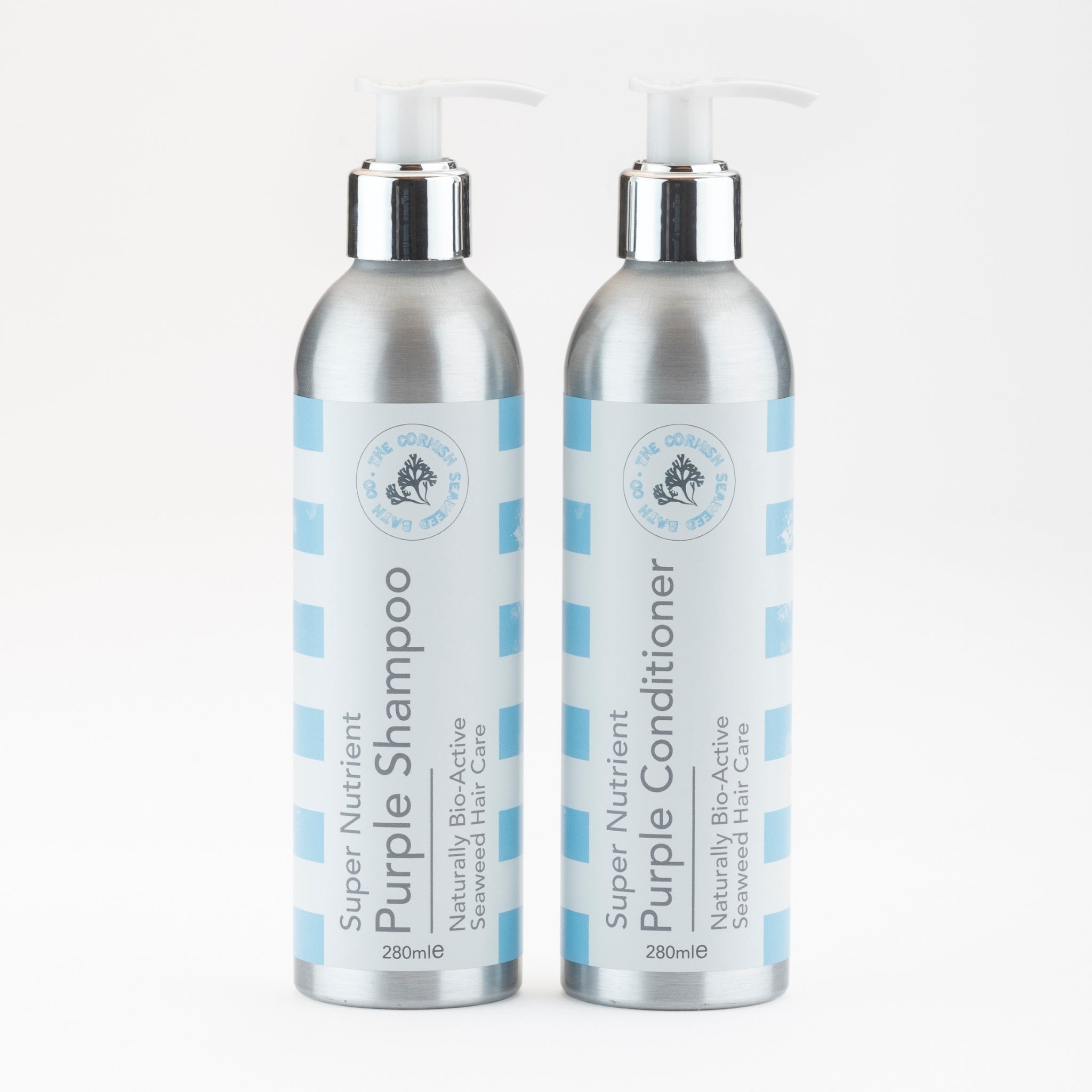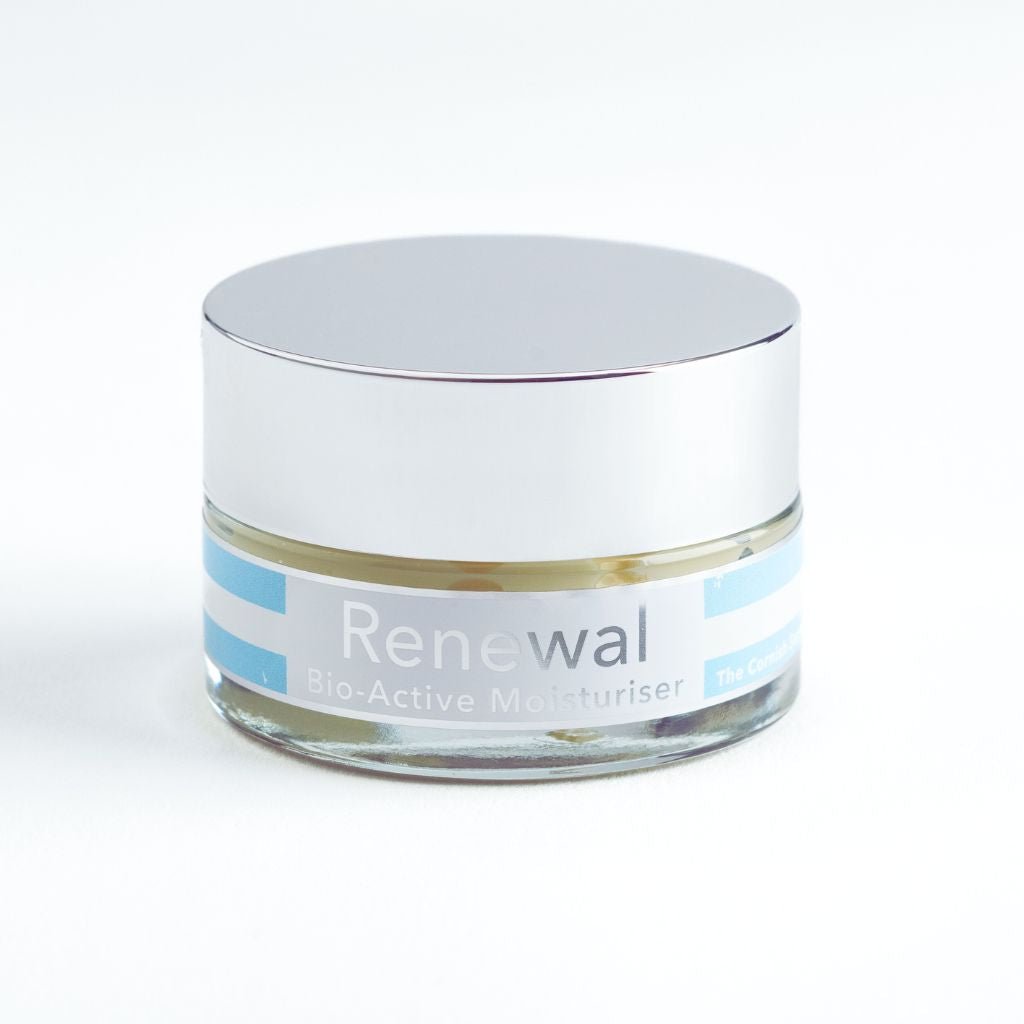Key Takeaways
- Bathing with whole-leaf seaweed provides health benefits beyond simple relaxation.
- Seaweed releases gel-forming compounds into warm water that support skin comfort.
- Seaweed baths act as a gentle form of thalassotherapy with natural humectants and minerals.
- Unlike regular baths, seaweed creates a protective film that helps maintain skin moisture.
- Seaweed delivers antioxidant compounds directly to the skin during the bath.
Table of Contents
- What a Seaweed Bath Is, and How It Differs from a Regular Soak
- The Science-Backed Benefits: Skin Comfort, Moisture Support, and Relaxation
- Why Seaweed Helps in the Bath: What's Inside the Fronds
- How to Prepare a Seaweed Bath at Home (Step-by-Step)
- Seaweed Bath vs. Epsom Salt and Ocean-Style Salt Baths
- Choosing Seaweed and Setting Conditions Safely
- Troubleshooting Common Issues
- When to Use Seaweed Bathing, and How Often
- Our Cornish Approach: Sustainable Harvest and Gentle Formulas
- Embracing the Gentle Power of Seaweed Bathing
Health Benefits of Taking a Bath With Seaweed, A Calm, Evidence‑Led Guide from Cornwall
The health benefits of taking a bath with seaweed extend far beyond simple relaxation. When whole-leaf seaweed releases its gel-forming compounds into warm water, you're experiencing a gentle form of thalassotherapy that supports skin comfort through natural humectants and minerals. Unlike regular baths that can leave skin feeling tight after 15 minutes, seaweed creates a protective film that helps maintain moisture whilst delivering antioxidant compounds directly to your skin.
For those looking to enhance their bathing ritual, our Seaweed Bath Ritual offers a carefully curated experience, while the Organic Super Nutrient Body Oil is ideal for sealing in moisture after your soak.
From our Cornwall workshop, we've observed how this ancient practice transforms an ordinary soak into something genuinely restorative, combining the therapeutic warmth of bathing with seaweed's unique bioactive compounds for measurable skin comfort.
What a Seaweed Bath Is, and How It Differs from a Regular Soak
A seaweed bath involves steeping whole-leaf or prepared seaweed in warm water to release gel-forming polysaccharides and minerals, creating what thalassotherapy practitioners recognise as a mineral-rich therapeutic soak. The seaweed, typically secured in a muslin bag, transforms ordinary bathwater into an amber-tinted, silky-textured experience that feels distinctly different against your skin.
What sets this apart from regular bathing is the formation of natural alginates that create a light, protective film on your skin. Where plain water can actually dehydrate skin after 10–15 minutes of soaking, seaweed's humectant properties work to support moisture retention. You'll notice the water develops a gentle oceanic aroma and a characteristic slip that signals the release of fucoidans and phlorotannins, compounds linked to skin-soothing and antioxidant activity.
Quick Bath Setup
- Temperature: 37–38°C for optimal comfort
- Time: 15–20 minutes maximum
- Visual cues: Light amber tint, silky feel when you squeeze the seaweed bundle 2–3 times during your soak
The Science-Backed Benefits: Skin Comfort, Moisture Support, and Relaxation

The health benefits of taking a bath with seaweed centre on how specific compounds interact with your skin during the soak. Alginates form a light film that may help reduce the tightness many people experience after regular bathing, whilst fucoidans and phlorotannins contribute potential soothing and antioxidant effects, though we're careful to note these benefits appear topically rather than systemically.
Beyond the seaweed compounds, the warm bathing process itself supports muscle relaxation and stress relief. Traditional seaweed bathhouses have long observed that guests report feeling calmer and more comfortable after their soaks, though this combines the therapeutic effects of warm water immersion with seaweed's unique properties.
For those with sensitive or occasionally itchy skin, seaweed baths offer gentler support when prepared thoughtfully. The key lies in maintaining that 37–38°C range, limiting soaks to 15–20 minutes, and crucially, patting skin dry and applying a moisturiser within three minutes whilst your skin remains damp from the bath.
Why Seaweed Helps in the Bath: What's Inside the Fronds
Brown seaweeds like Fucus serratus contain three primary compound groups that contribute to the bathing experience. Alginates act as natural humectants, forming that characteristic gel when released into warm water. Fucoidans may offer skin-calming properties, whilst phlorotannins contribute antioxidant activity, though we emphasise these work through topical contact rather than dramatic transformation.
When you immerse seaweed in warm bathwater, these compounds create visible changes: the water develops an amber tint and takes on a silky texture that indicates proper infusion. This tactile shift signals that the gel-forming polysaccharides are active and available to support your skin's comfort during the soak.
We're measured about what this means practically. The compounds support skin feel and may contribute to comfort, but seaweed bathing works best as part of gentle skincare routines rather than as a standalone solution for skin concerns. For more ideas on incorporating seaweed into your daily routine, see five ways to use seaweed to care for your skin health.
Key Compounds & Their Roles
- Alginates: Create protective, moisture-supporting film
- Fucoidans: May contribute to skin-calming effects
- Phlorotannins: Provide antioxidant activity through topical contact
How to Prepare a Seaweed Bath at Home (Step-by-Step)
Start with two generous handfuls of whole-leaf dried seaweed secured in a muslin or fine mesh bag. Hang this bag under your hot tap whilst filling the tub, allowing the flowing water to steep the seaweed as your bath fills to the desired level.
Maintain water temperature between 37–38°C, warm enough to release the seaweed's compounds effectively but not so hot as to irritate sensitive skin. Once your water shows that characteristic amber tint and silky feel, settle in for 15–20 minutes, gently squeezing your seaweed bag every 5–7 minutes to encourage continued release of beneficial compounds.
After your soak, pat skin dry rather than rubbing, then apply your preferred moisturiser within three minutes whilst skin remains damp. This timing helps seal in the moisture-supporting benefits. For cleanup, a simple strainer catches any escaped seaweed pieces, and remaining seaweed can be stored cool and dry if you plan to reuse it the same day.
Essential Timing & Quantities
- Seaweed amount: 2 generous handfuls in mesh bag
- Soak duration: 15–20 minutes maximum
- Post-bath care: Moisturise within 3 minutes of exiting
- Bag squeezing: 2–3 times during soak for optimal release
Seaweed Bath vs. Epsom Salt and Ocean-Style Salt Baths

When comparing bathing additives, we've selected these options based on skin feel after bathing, tactile changes to the water, natural scent profiles, and clean-up practicalities.
| Feature | Seaweed Bath | Epsom Salt Bath | Ocean-Style Salt Bath |
|---|---|---|---|
| Skin Feel After | Soft, moisturised slip from alginates | Clean but potentially drying | Refreshed, mineral-tinged feel |
| Water Texture | Amber-tinted with gentle viscosity | Clear, fully dissolved | Clear with salt crystals |
| Natural Scent | Subtle oceanic, earthy aroma | Neutral to mineral | Briny, sea-like fragrance |
| Preparation | Mesh bag prevents debris | Dissolves completely | Stir to dissolve crystals |
Seaweed baths excel when you prefer that characteristic gel-like slip and want to avoid the potentially drying effects of high-mineral salt soaks. Epsom salt remains ideal for those who favour completely clear water, whilst ocean-style salt baths offer a middle ground with their familiar briny scent and straightforward dissolving action. If you’re interested in a broader range of bath and shower options, explore our Bath and Shower collection.
Choosing Seaweed and Setting Conditions Safely
Brown seaweeds like Fucus serratus work particularly well for bathing, releasing their beneficial gel-polysaccharides readily in warm water. When sourcing seaweed, look for responsibly harvested varieties that have been properly air-dried to preserve their natural compounds whilst ensuring safe home use.
Those with thyroid conditions, pregnancy concerns, or known iodine sensitivity should consult their clinician before beginning seaweed bathing, as brown seaweeds naturally contain iodine. A simple patch test, dabbing cooled seaweed infusion on your inner forearm for 24 hours, helps identify any skin reactions before your first full bath.
Safety First Checklist:
- Patch test 24 hours before first use
- Start with cooler water (36-37°C) for sensitive skin
- Begin with shorter 10-12 minute soaks
- Seek advice if pregnant or managing thyroid conditions
For very sensitive skin, stay at the cooler end of the temperature range and limit initial soaks to 10-12 minutes. You can always extend the time as your skin adapts, but starting gently prevents any uncomfortable reactions.
Troubleshooting Common Issues
If you experience itchy or flushed skin after your seaweed bath, lower the water temperature by 1-2°C and reduce your soak time by 5-10 minutes. Always pat your skin dry rather than rubbing, and apply a gentle moisturiser within three minutes whilst your skin remains slightly damp.
A strong oceanic aroma can sometimes feel overwhelming in an enclosed bathroom. Pre-rinsing your seaweed in cold water for 10-15 seconds before adding it to the bath helps moderate the scent, whilst keeping windows slightly open provides gentle ventilation.
To prevent any tub residue or drain issues, always contain your seaweed in a muslin or mesh bag, squeezing gently rather than vigorously. If you notice any sticky feeling on your skin afterwards, a quick lukewarm rinse removes the sensation whilst preserving the moisturising benefits. For additional tips on gentle skincare, you may find our facial care guide helpful.
When to Use Seaweed Bathing, and How Often

Evening seaweed baths work particularly well as part of a wind-down routine, especially 60-90 minutes before bedtime when the warm water and gentle ritual naturally encourage relaxation. Many find them especially welcome after coastal walks, physical activity, or during periods when skin feels particularly dry or tight.
Start with once weekly bathing and observe how your skin responds. Most people find 1-2 times weekly provides ongoing comfort without over-softening the skin. If you notice any sensitivity developing, simply space the baths further apart or reduce the soaking time.
The health benefits of taking a bath with seaweed become most apparent when you establish a gentle routine: bathe, pat dry, then apply a light body oil whilst your skin is still slightly damp to seal in the moisture and comfort. For those with eczema-prone skin, our eczema collection offers additional support.
Our Cornish Approach: Sustainable Harvest and Gentle Formulas
We hand-harvest Fucus serratus from Cornwall's clean coastal waters, taking only the top portions of each plant to encourage healthy regrowth. Our seaweed is then naturally air-dried on wooden racks for 2-5 days, depending on weather conditions, preserving its gel-forming compounds without chemical processing.
This same carefully prepared seaweed forms the foundation of our Wild Seaweed Bath, designed specifically for the home bathing ritual. Follow your soak with our Body Oil applied to damp skin, or begin your routine with our gentle Pure Seaweed Soap or Seaweed & Frankincense Body Wash to prepare your skin for the seaweed infusion's benefits.
For facial care that complements your seaweed bathing routine, our Renewal Facial Cleanser and range of Facial Oils work with the same Cornish seaweed principles. Each product supports the skin's natural comfort and moisture balance without overwhelming or complicated layering.
Embracing the Gentle Power of Seaweed Bathing
The health benefits of taking a bath with seaweed extend beyond simple relaxation, offering genuine support for skin comfort through naturally occurring compounds that work gently with your body's own moisture systems. Unlike harsh treatments or complicated routines, seaweed bathing provides a straightforward way to nurture your skin whilst enjoying a calming ritual.
Starting with proper preparation, the right temperature, timing, and quality seaweed, ensures you experience the full range of benefits whilst avoiding common pitfalls. The gel-like slip of properly infused seaweed water signals that beneficial alginates are present, ready to support your skin's natural barrier function.
As interest in natural wellness practices continues to grow, seaweed bathing offers a time-tested approach rooted in coastal traditions yet supported by modern understanding of marine compounds. Whether you're seeking relief from dry skin, a moment of evening calm, or simply curious about this gentle practice, the health benefits of taking a bath with seaweed become apparent from your very first soak.
The beauty lies in its simplicity: warm water, quality seaweed, and twenty minutes of quiet time can transform both how your skin feels and how you approach self-care. In our fast-paced world, this ancient practice reminds us that sometimes the most effective solutions are also the most natural ones.
Frequently Asked Questions
How does a seaweed bath differ from a regular bath in terms of skin benefits?
A seaweed bath differs from a regular bath by releasing gel-forming compounds that create a protective film on the skin, helping to maintain moisture and support skin comfort. Unlike a standard soak, it delivers natural humectants and minerals that gently nourish the skin while providing a silky, soothing texture to the water.
What are the key compounds in seaweed that contribute to skin comfort and hydration during a bath?
The key compounds in seaweed include polysaccharides such as alginates, which form a gel-like texture in warm water, along with minerals and antioxidants. These work together to support hydration by attracting and retaining moisture on the skin’s surface, while also providing gentle antioxidant support.
How should I prepare and time a seaweed bath to maximize its health benefits?
To prepare a seaweed bath, steep whole-leaf seaweed in warm water, ideally secured in a muslin bag, to allow the release of beneficial compounds. A soak of around 15 to 20 minutes is recommended to experience the full skin comfort and hydration benefits without over-drying the skin.
Can seaweed baths be used regularly, and are there any safety considerations to keep in mind?
Seaweed baths can be enjoyed regularly as part of a gentle bathing ritual, though it’s best to listen to your skin’s response and avoid overuse if any irritation occurs. Ensure the seaweed is clean and sourced sustainably, and avoid very hot water to maintain skin comfort and safety throughout your soak.
A picture tells a thousand words: out of necessity, some images in this blog post have been created using artificial intelligence models. This is to help us bring to life & more comprehensively express the written content within this post. We only using artificially generated images when we don’t have a suitable image available to us.



